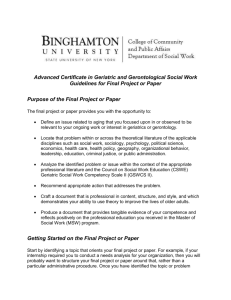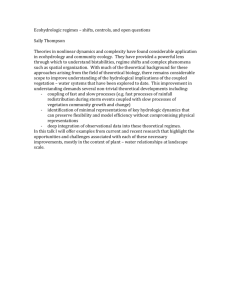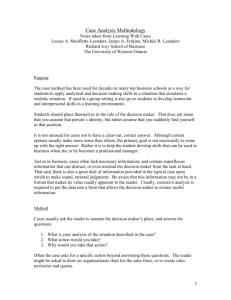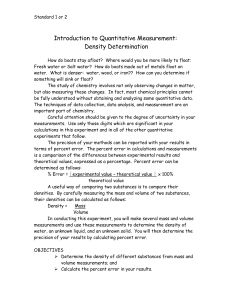Critical thinking hand-out
advertisement
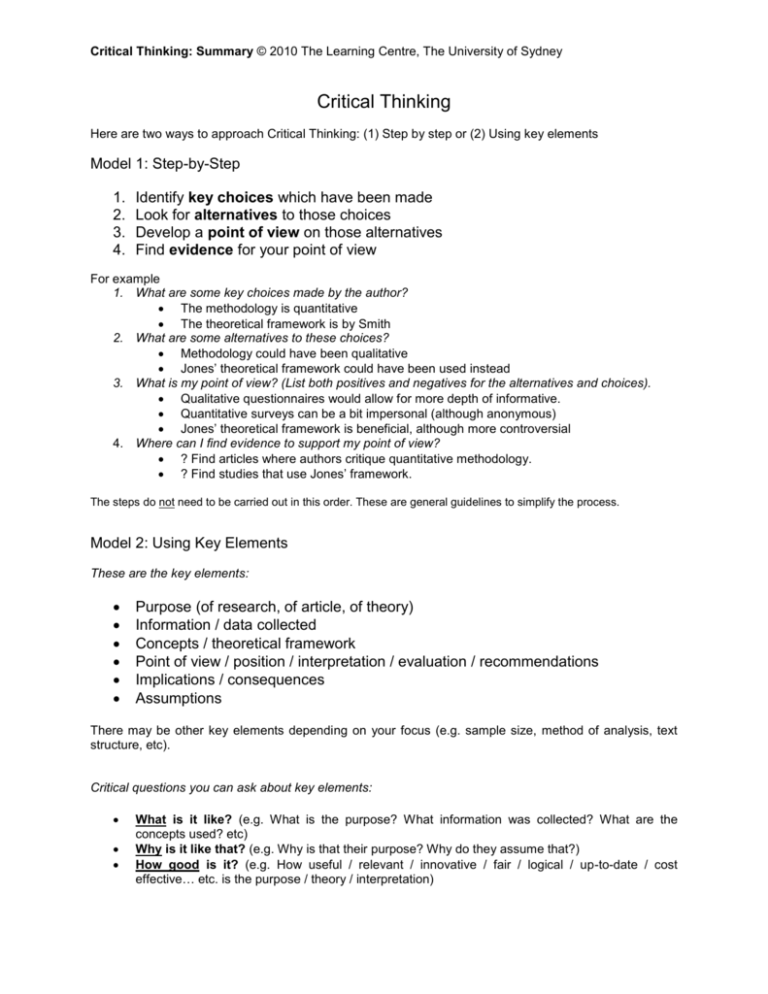
Critical Thinking: Summary © 2010 The Learning Centre, The University of Sydney Critical Thinking Here are two ways to approach Critical Thinking: (1) Step by step or (2) Using key elements Model 1: Step-by-Step 1. 2. 3. 4. Identify key choices which have been made Look for alternatives to those choices Develop a point of view on those alternatives Find evidence for your point of view For example 1. What are some key choices made by the author? The methodology is quantitative The theoretical framework is by Smith 2. What are some alternatives to these choices? Methodology could have been qualitative Jones’ theoretical framework could have been used instead 3. What is my point of view? (List both positives and negatives for the alternatives and choices). Qualitative questionnaires would allow for more depth of informative. Quantitative surveys can be a bit impersonal (although anonymous) Jones’ theoretical framework is beneficial, although more controversial 4. Where can I find evidence to support my point of view? ? Find articles where authors critique quantitative methodology. ? Find studies that use Jones’ framework. The steps do not need to be carried out in this order. These are general guidelines to simplify the process. Model 2: Using Key Elements These are the key elements: Purpose (of research, of article, of theory) Information / data collected Concepts / theoretical framework Point of view / position / interpretation / evaluation / recommendations Implications / consequences Assumptions There may be other key elements depending on your focus (e.g. sample size, method of analysis, text structure, etc). Critical questions you can ask about key elements: What is it like? (e.g. What is the purpose? What information was collected? What are the concepts used? etc) Why is it like that? (e.g. Why is that their purpose? Why do they assume that?) How good is it? (e.g. How useful / relevant / innovative / fair / logical / up-to-date / cost effective… etc. is the purpose / theory / interpretation) Critical Thinking: Summary © 2010 The Learning Centre, The University of Sydney Whose choice is it? (e.g. the author’s, other researchers who are reported, everyone in the discipline)


